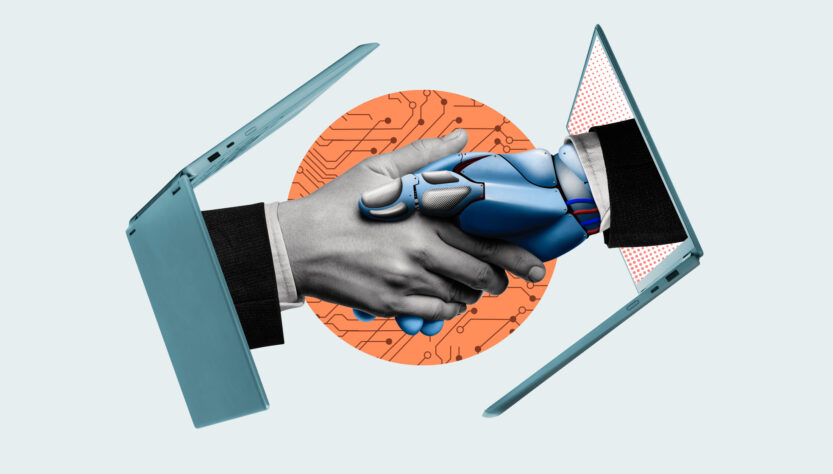
Striking a Balance Between Productivity and Privacy
AI-based employee monitoring is increasingly prevalent in workplaces, offering tools to track performance, productivity, and compliance. While these technologies can boost efficiency and security, they also raise significant privacy concerns. This blog explores how businesses can effectively balance the benefits of AI monitoring with the need to protect employee privacy. Companies can implement monitoring practices that enhance productivity while respecting individual rights by understanding the advantages and risks.
AI-Based Employee Monitoring Is On The Rise
AI-based employee monitoring leverages artificial intelligence to track and analyze employee activities, performance, and behavior in real-time. These tools can include:
- Productivity tracking–Monitoring software can analyze how employees spend their time on various tasks, helping identify areas for improvement and ensuring efficient work habits.
- Performance metrics–AI tools can assess performance by tracking key metrics such as task completion rates, accuracy, and deadline adherence.
- Compliance and security–AI monitoring can detect unusual activities or behaviors, ensuring compliance with company policies and enhancing overall security.
These tools offer significant benefits for employers by providing data-driven insights that can improve decision-making, enhance productivity, and maintain a secure work environment. However, it’s crucial to understand that these benefits come with the responsibility to manage the collected data ethically and transparently, ensuring that employee privacy is not compromised.
Productivity Benefits
AI-based employee monitoring can boost productivity by providing detailed insights and data-driven solutions.
Improved Efficiency
AI monitoring tools track how employees spend their time on various tasks, identifying inefficiencies and areas for improvement. By analyzing this data, managers can streamline workflows and allocate resources more effectively, ensuring employees focus on high-priority tasks.
Enhanced Performance Tracking
These tools offer real-time performance metrics, allowing managers to monitor task completion rates, accuracy, and deadline adherence. With this information, managers can provide timely feedback and support, helping employees stay on track and meet their goals.
Better Management Decisions
Data gathered from AI monitoring systems provides valuable insights into employee behavior and productivity patterns. Managers can use this information to make informed decisions about project timelines, staffing needs, and training programs, leading to more effective team management and overall productivity.
Increased Security and Compliance
AI monitoring can also enhance security by detecting unusual activities or behaviors indicating potential compliance issues or security threats. This proactive approach helps prevent data breaches and ensures employees adhere to company policies.
By leveraging AI-based monitoring tools, businesses can enhance productivity, improve decision-making, and maintain a secure and compliant work environment, ultimately leading to greater efficiency and success.
Privacy Concerns and Legal Obligations
While AI-based employee monitoring offers significant productivity benefits, it also raises serious privacy concerns and legal obligations. Constant surveillance can create a sense of invasion, decreasing employee morale and trust. Employees may feel their privacy is compromised if every action is monitored.
Additionally, the vast amount of data collected can be misused if not properly managed, posing a risk of sensitive information being accessed by unauthorized personnel or misused. Over-monitoring can undermine employee autonomy and trust, making employees feel micromanaged negatively impacting their performance and job satisfaction.
New York has specific privacy laws that regulate employee monitoring. Employers must notify employees about monitoring practices and ensure the collected data is used only for legitimate business purposes. Employers must balance the benefits of AI monitoring with respect for employee privacy. This involves implementing transparent policies, obtaining necessary consent, and ensuring compliance with relevant privacy laws to protect the company and its employees.
Best Practices For Implementing AI Monitoring
Implementing AI-based employee monitoring requires careful planning and a commitment to ethical practices to ensure it benefits both the company and its employees. Here are some best practices:
- Transparency and communication–Communicate the purpose and scope of monitoring to employees. Transparency fosters trust and helps employees understand the benefits of AI monitoring.
- Clear policies and guidelines–Establish and maintain comprehensive policies that outline acceptable use, data collection, and privacy protections. Make sure these policies are easily accessible to all employees.
- Data security–Ensure robust security measures are in place to protect collected data from unauthorized access or breaches. Regularly review and update security protocols.
- Limited access–Restrict access to sensitive data to only those who need it for legitimate business purposes. This minimizes the risk of data misuse.
- Employee involvement–Involve employees in the implementation process, seeking feedback and addressing concerns.
By adhering to these best practices, businesses can implement AI monitoring systems that enhance productivity while respecting employee privacy and maintaining a positive workplace environment.
Balancing Productivity and Privacy
Balancing productivity and privacy in AI-based employee monitoring is crucial for maintaining a healthy workplace. Start by ensuring transparency and open communication with employees about monitoring practices. Clearly explain the purpose, benefits, and scope of monitoring to build trust and understanding. Establish clear policies that protect employee privacy while still enabling effective productivity tracking.
Review and update monitoring practices regularly to align with evolving privacy laws and workplace needs. Encourage employee feedback and be willing to adjust practices based on their concerns. By striking this balance, businesses can leverage the advantages of AI monitoring while fostering a respectful and supportive work environment.
Ensuring Responsible AI Monitoring Practices
Balancing AI-based employee monitoring with privacy considerations is essential for fostering a productive and respectful workplace. If your business wants to implement or refine its monitoring practices, ensuring compliance with privacy laws is critical. Contact Lipsky Lowe today for guidance on creating effective and compliant AI monitoring strategies.

